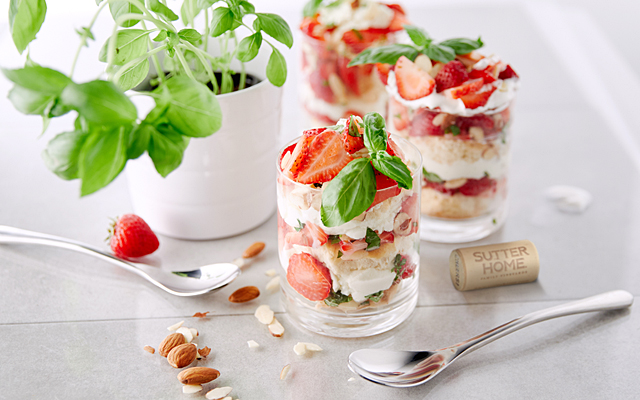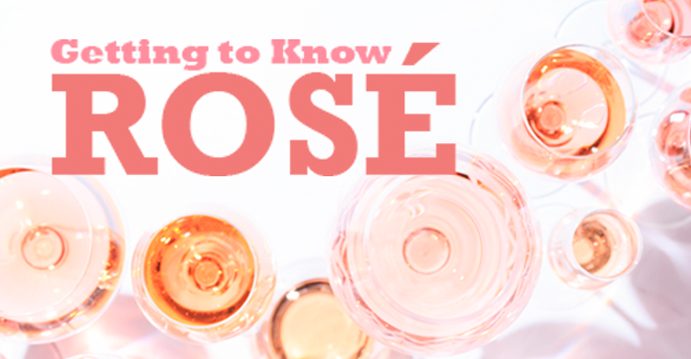Getting to Know Rosé
A symbol of glamour and leisure, rosé was once the wine of choice for aristocrats and the powerful elite of 14th Century Europe. It was actually considered quite posh to dilute a wine and the preference toward pink was considered a sign of a more refined palate.
Historically, many of the first-made wines were light-colored field blends of both white and red grape varieties. In the sixth century BC, the Phoenicians brought grape vines from Greece to what is known as modern-day Marseille in southern France. The wines produced from these vines were naturally light in color and word spread of this pleasant wine around the Mediterranean. When the Romans landed in Provence, they used their trade networks to popularize these wines throughout the south of France and henceforth many consider the epicenter of rosé to be in this region of the world.
Rosé, however, isn’t from a specific region or grape. It’s a genre of wine, like red wine and white wine. The biggest producers of this style are France, Spain, Italy and the United States. Several other places of the world also make excellent rosé including South America, Germany and Australia. These pretty wines are known by other several names including rosado, rosato, blanc de noir, vin gris and blush. The wines may also have a name using the single grape variety from which they are made, such as White Zinfandel, White Grenache, Pinot Noir Blanc or White Merlot. Most rosé wines are blends of multiple grapes. Some of the most common grape varieties used in dry/European-style rosé are Grenache, Sangiovese, Syrah, Mourvèdre, Carignan, Cinsault and Pinot Noir.
While there have been rosés made in the European style throughout the American winemaking history, it wasn’t until the end of the 20th century that “pink wines” became a truly significant segment of the American wine market. Like the romantic fascination of the French baguette and beret, rosé has been adopted into American culture with charm. Over the years, it has become a quality wine choice with an unpretentious and delicious flavor for many palettes and continues to be a favorite choice for many people today. California, in particular, is making beautiful rosés that can rival some of the best in the world.
how rosé is made
Winemakers use nearly all types of grape varietals to produce rosé. And, it can be made still, semi-sparkling or sparkling with a range of sweetness levels. There are basically three ways to make rosé wine. The main style used for making rosé as a primary wine is called the maceration method. It is a method of letting the juice stay in contact with the grape’s skin for a period of time ranging from two hours to a couple of days depending on the producer and winemaker’s choice. The longer the skins are left sitting in the juice, the darker the color of the finished rosé and the more the wine will take on the tannin structure found in red wines. After the time with skin contact, the grape’s juice is strained from the solid matter, called “must”, and fermentation begins.
Another method is called Saignée, pronounced “san-yay”. This method consists of taking the juice from the first part of the red wine process and putting it into its own vat. This is a common methodology in regions that produce fine red wines like Napa and Sonoma. The purpose of bleeding off the juice not only produces a lovely rosé but it also concentrates the red wines’ intensity.
Lastly, the blending method is used when a bit of red wine is added to a vat of white wine to make it pink. It doesn’t take much red wine to dye a white wine. This is more common in regions where sparkling wine is produced such as Champagne, France.
swirl, sniff, sip, savor
How to identify wine in the glass
Most obviously, the tell-tale sign of a rosé wine is from its color: PINK!
Other than that, depending on the type of grape the rosé wine is made with will vary the flavor, as will the sweetness level of the wine. For example, a deeply colored Italian Aglianico rosé will bring out lively orange and soft cherry flavors while a pale-colored Grenache rosé from Provence will taste of honeydew melon, lemon and celery. Essentially, there is a range of variance in style of rosé depending on region, grape and sweetness level which will determine slightly different palette characteristics of the wine.
Overall, the primary flavors of rosé wines, in general, are strawberry, watermelon, rose petal, hibiscus, honeydew melon and citrus zest. For drier rosé, there is often a pleasant crunchy green flavor similar to celery or rhubarb with a slightly salty finish.
what’s in a glass?
Would wine in any other glass smell as sweet?
There are two types of wine glasses generally used for rosé wines. One option is a stemmed glass with a short bowl and a slightly flared lip. The flared rim glass directs wine to the top of the tongue to help temper the crisp acidity or enhance any sweetness in the wine, depending on the style chosen to imbibe. The round bowl of the glass emphasizes the fruitiness of the wine.
The other option is an all-purpose white wine glass since the process of making rosé mostly resembles that of white wine.

Rosé Inspired Balsamic-Roasted Strawberry Shortcakes
Brown Sugar Maple-Glazed Biscuits:
• 5 cups all-purpose flour, plus more for shaping the dough
• 1/4 cup packed dark brown sugar
• 1 tablespoon kosher salt
• 1 teaspoon baking soda
• 1 cup (2 sticks) butter, frozen, plus 2 tablespoons butter
• 1 3/4 cups buttermilk
• 2 tablespoons pure maple syrup
Strawberries:
• 1 1/2 pints strawberries, hulled and halved
• 1 tablespoon balsamic vinegar
• 1 tablespoon pure maple syrup
• 1/2 teaspoon pure vanilla extract
Whipped Cream:
• 1/2 cup heavy cream
• 1 tablespoon pure maple syrup
• 1/2 teaspoon pure vanilla extract
Make the biscuits: Heat the oven to 400° F.
Line two baking sheets with parchment paper.
Sift together the flour, brown sugar, salt, and baking soda into a large bowl. Using a box grater, grate the frozen butter into the flour. Using the tips of your fingers, gently work the butter into the dough until it resembles coarse crumbs.
Add the buttermilk and gently stir to form a soft dough. Turn the dough out onto a floured surface and shape it into an 8 x 12-inch rectangle that’s about 1.5 inches thick. Using a biscuit cutter (or a drinking glass, in a pinch), cut out as many biscuits as possible. Reshape the dough and repeat, working the dough as little as possible. You should end up with 10 biscuits.
Transfer the biscuits to one of the prepared baking sheets and bake for just 20 minutes. Meanwhile, melt the remaining 2 tablespoons of butter in a small saucepan and stir in the maple syrup. Liberally brush the biscuit tops with the maple butter and bake for 10 minutes more, or until the tops are golden brown and the biscuits have cooked through. Set the biscuits on a wire rack to cool. Keep the oven on.
Make the strawberries: In a large bowl, toss the berries, vinegar, maple syrup, and vanilla and spread them on the second prepared baking sheet. Roast the strawberries for 20 minutes, or until the berries have softened nicely.
Make the whipped cream: In the bowl of a stand mixer fitted with the whisk attachment (or in a large bowl using a hand mixer), whip the cream until thickened. Stir in the maple syrup and vanilla.
Split the biscuits horizontally and place a dollop of whipped cream on the bottom half. Spoon on the roasted strawberries and top with the other biscuit half, and some more cream for good measure.
• • •
Many more wine-inspired recipes can
be found on Sutter Home website.
https://www.sutterhome.com/recipes-pairings/
Find the recipe for Balsamic-Roasted Strawberry Shortcakes and more in “Eat Delicious: 125 Recipes for Your Daily Dose of Awesome,” by Dennis Prescott.
https://www.harpercollins.com/9780062456038/eat-delicious
“Summertime living is full of happiness, with the beach, backyard grilling sessions, and in-season fruits and veggies completely rocking the culinary landscape. And the time of year when folks head to local U-Pick farms to collect baskets of fresh, perfectly juicy berries. The king of berries? The almighty strawberry. Delicious! When strawberry season is in high gear, there’s really nothing quite like homemade strawberry shortcake.”
– Entertaining tip from “Eat Delicious”
